 Your new post is loading...
 Your new post is loading...
Apple has more than $1 billion budgeted for original programming, Facebook wants its own version of “Scandal” and Google is ready to spend up to $3 million per episode on a drama. The three digital giants have signaled to Hollywood that they are serious about entering a television landscape that Netflix and Amazon shook up just a few years ago. Their arrival will make an already hypercompetitive industry even more ferocious. This year, there are expected to be more than 500 scripted TV shows, more than double the number six years ago. Although there have been some signs that the industry’s output may plateau — cable companies like A&E and WGN have said they are getting out of the scripted television business — the entry of Apple, Facebook and Google into the fray almost guarantees that the volume of shows will continue to grow, even as viewers grapple with a glut of programming and an expanding number of streaming platforms. With the prospect of a flood of tech money about to rush in, Hollywood has welcomed the news....
The women’s rallies didn’t just draw millions of marchers to the streets of cities across the country and around the world, it sent viewers to cable news for continuing coverage of them. For MSNBC the 10 a.m. to 6 p.m. block was the most watched Saturday since March 29, 2003, during the early days of the Iraq war. MSNBC averaged 1.45 million total viewers. In the A25-54 demo MSNBC averaged 388,000, the best Saturday since Hurricane Rita coverage in Sept. 2005. MSNBC still trailed Fox News (3,075,000 total viewers /656,000 A25-54) and CNN (2,107,000 / 672,000) in the daypart....
While broadcast viewers are thought to represent a more traditional TV audience than those watching cable, a new report says they are actually less likely to watch programming live than their cable counterparts, especially if the network in question is The CW. That information comes from TiVo Research's Q2 State of TV report, which was released today. The quarterly report tracks time-shifting using TiVo's Media TRAnalytics data set, which anonymously aggregates set-top box data from more than 2.3 million households including TiVo owners and other cable providers. According to the study, while the vast majority of TV viewing continues to be live, broadcast network prime-time viewing is more likely to be time-shifted than cable programming. Twenty-six percent of broadcast prime-time programming was time-shifted during the second quarter (23 percent overall was watched in the C3 window, from the same day to three days later; the other 3 percent was time-shifted four to seven days). In total day viewing, 20 percent of broadcast programing was time-shifted....
Netflix's data wizard says we're close to a future where algorithms know almost everything we want. "A very realistic vision is we should get to the point where you just turn on your Netflix app and automatically a video starts to play that you’re very happy with," says Vice President of Innovation Carlos Gomez-Uribe. "If you’re not, you may have to flip once or twice and end up with something that you’re very, very happy with. Only in, say, 10-to-20 percent of sessions [will you] escape into ... browse mode." Netflix has been creeping toward that goal for more than a decade. There was the Netflix Prize, launched in October 2006, which aimed at predicting how much users would like videos. As the company shifted into streaming video, it turned to engagement data to predict what users really wanted to watch. Last year saw the introduction of a major new algorithm that chooses between other algorithms to find the best recommendation. And many more improvements big and small. "It's just a matter of time," says Gomez-Uribe....
Better watch out, you better not cry, you better not pout, I'm telling you why: Santa Claus is coming to town, and this year he's handing out 2015 ratings victories to seemingly everyone.
Several networks are closing out 2015 by declaring calendar year ratings wins, some in the traditional demographics, others in more creative categories. It's the TV version of "everyone gets a trophy." Here's a rundown of which networks seem to be on top in certain demos this year, according to Nielsen...
So, John, how do you explain the drop in live TV viewers?
There are three key reasons: - Convenience . . . time shifting to view whenever desired.
- Additional viewing sources . . . mobile, computers etc.
- Low cost viewing platforms with minimal advertising . . . OTT (Over The Top) and online streaming...
Nielsen’s 2014 Advertising & Audiences Report found that while the average U.S. home television receives 189 TV channels, the typical consumer only watches 17 different channels. And with mobile devices like tablets and phones increasingly becoming go-to screens as well, it makes sense that some people may prefer having “cordless” viewing options, particularly young people who have grown up used to watching shows online — sometimes referred to as “cord-nevers.”
Yet a report by Leichtman Research Group found that the top pay TV providers have lost only about 0.2 percent of its customer based in the past couple of years. A study by Videorx.com that was cited in the January/February 2015 issue of Streaming Media Magazine also found that most of its respondents hadn’t completely “cut the cord.”
Instead, combining streaming services with traditional programming — in other words, creating individual viewing options according to your own preferences — is becoming much more the norm. Among the Videorx.com study’s respondents, for example, almost 60 percent subscribed to paid TV, and 66 percent had Netflix accounts and 48 percent Amazon Prime/Instant video accounts...
In a rapidly changing media landscape, social media has retained its value to consumers as a source of entertainment, whereas television and movies have lost significant share, according to a study by Edelman.
The Internet has maintained its value to consumers as the second-leading source of entertainment in 2011, whereas TV, despite its dominance, and movies have declined, 11 and 22 percentage points, respectively...
Advertising age and trendrr present the social-tv ecosystem chart 2.0.Last month Ad Age asked for reader input as we worked with our editorial partner Trendrr, the social-media monitoring firm, on updating our Social-TV Ecosystem chart -- a graphic representation of key companies in the sprawling social-TV space. Today, we're presenting the results of that collaboration.
Roger Ailes says his network “changed the face of journalism forever.” Whether it was for the better is a matter of intense debate. One night last month, Roger Ailes stood before a crowd of Fox News employees gathered at Chelsea Piers in Manhattan for a celebration marking the channel’s 15th anniversary. “Our prime time is just unbeatable,” he told them. “Our competition has collectively changed their prime-time lineup in this period of time,” he continued. “We’ve done it a few times. They have collectively changed it 63 times. Shows, stars — I mean, it’s sad, you know? I called and asked them all to move to the second floor wherever they were working. Because when they jump, I don’t want it to hurt.”...
|
Watching television is America’s favorite pastime (Sorry, baseball.) and there are few limits on how and where people can catch up on their favorite shows. According to a recent Morning Consult poll, 48 percent of Americans preferred to do so on Netflix in the past six months. While 73 percent of people still said they have a cable or satellite subscription, many are dissatisfied with various components of their service. The graphic below examines what cable can do to hold its own against streaming services....
The "golden age" of TV shows might appear to be in full swing still, and it certainly is in terms of output. The industry is on pace to handily beat the 409 scripted shows released in 2015, continuing an upward trend. But there's a problem: people aren't tuning in, at least in the same numbers. For new episodes last quarter, "average viewership for the top 200 general entertainment series declined 20% year-over-year," according Pacific Crest (using the L+3 measurement, live plus three days). Networks are still pumping out shows, people just seem to have lost a bit of interest.It's even worse with kids' shows, which saw the top 500 series take a 30% viewership dive in Q3 versus last year, the analysts noted in the report....
The hyper-fragmentation of consumer choice across all screens is reducing the share of choices they make to watch a TV channel. That’s among the top findings coming out of the latest edition of Nielsen’s “Total Audience Report.”
The report, which was released to clients Thursday, is the first to publish shares of channels received and viewed by the average American household in a while.
It shows the average number viewed has fallen to less than 10% of the channels they receive.
That’s down dramatically from the last time Nielsen published such data, which showed the average was still in the double digits....
Last week, we analyzed all of the new fall TV shows to find out which ones are worth watching. As the new TV season kicks off this week, several media buyers have targeted the very same freshman programs as having the best chance to connect with audiences this fall: Designated Survivor, Pitch and This Is Us. But they're also scratching their heads over other fall trends, including the surplus of shows revolving around time travel, and another round of programs based on movies, despite the failure last year of Minority Report, Limitless, Rush Hour and Uncle Buck. The new TV show that is top of mind among buyers, and consistently the first one brought up when talking about the fall season's best bet, is ABC's Designated Survivor, starring this week's Adweek cover subject, Kiefer Sutherland. Sam Armando, lead investment director at Mediavest | Spark, said in the Sutherland profile that putting together a hit series is like completing a puzzle, "and you need all these pieces to kind of fit for success." Designated Survivor, he noted, boasts Sutherland's star power, a relatable premise about an Everyman thrust into an extraordinary situation and propulsive storylines. "All those pieces come together very nicely, so you think it would be successful," said Armando....
Video consumption has reached its tipping point. According to a new study, U.S. consumers under 45 years of age spend even amounts of time consuming both digital video and television.Millward Brown’s study, “Ad Reaction: Video Creative in a Digital World,” found that while older generations may be more reluctant to move away from cable television, their younger counterparts have no problem doing so.
Individuals between ages 16 and 45 spent a little over three hours every day watching online video. Half of that is through smart TVs, but 45 minutes are spent on smartphones, on average, with desktop and tablets claiming the rest of the share.
This behavior isn’t limited just to the United States. Online consumption was even higher in some foreign countries, with Nigeria leading all other countries in online consumption.
Millward Brown points out that the trend is forcing brands to reconsider how video is targeted as a marketing medium, highlighting the differences and challenges between online and traditional TV. By now, it’s clear there’s no turning around: Online video is going to replace television....
This is particularly true in the world of video, where TV—still a powerful medium, to be sure—is now far from the be-all for securing desired levels of video impressions. According to Nielsen, traditional television viewing has decreased from the prior year across the majority of demographics.
MoffettNathanson reports that the pay TV industry lost an estimated 556,000 subs in Q2 2015, and that commercial ratings for cable channels have been down every month since May 2014. And Americans are now spending almost five and a half hours a day viewing screens ... without even turning on a television! At the same time, Kinetic USA reports Americans now spend an unprecedented 70 percent of their time out of the home.
So the conundrum is this: TV is moving in a negative direction, yet we know that video remains the most powerful form of ad messaging At the same time, with consumers out and about more than ever—what's a media planner to do?...
The show's over for TV: Adults set to spend more time using digital media than watching television by end of this year, claims study.
People will soon be spending more time using their smartphones and tablets for surfing the web, checking social networks and playing games than they do watching television, new research has found.The average adult will use a mobile device for five hours a day compared to just four and half hours watching television.A US marketing company has claimed the tipping point when digital devices surpass the popularity of TV will come later this year....
... “We don’t actually believe there is such a thing as digital video. It’s all just TV,” said Jon Heller, co-founder and co-CEO of FreeWheel, which works with companies to monetize content within the new media space. “No one buys kitchen television, in terms of advertising, the same way that they don’t buy living room television or bedroom television. It is all just TV.” The difference, he says, is that the audience now has more choices about when and where they watch, and the television industry needs to figure out how to deal with that diffusion.
One unanticipated side effect of this greater availability, according to the seventh annual Deloitte State of the Media Democracy survey, released earlier this year, is that the availability of more ways to watch content–like laptops, tablets and other mobile devices–may be growing the amount of television watched overall, instead of simply replacing one form with another.
“Our conclusion is, the individuals using tablets and smartphones tend to be much heavier media consumers across the board, and in particular tend to be heavier users of digital applications, such as streaming and downloading, even if they’re not using their tablet to do that,” Deloitte vice chairman and U.S. Media and Entertainment sector leader Gerald Belson told Wired....
In pivoting aggressively from print to local TV, Gannett Inc. and Tribune Co. are embracing a legacy media model that could be headed for the same audience fragmentation and economic dislocation as the newspaper businesses they are trying to escape.
As detailed here yesterday, the two iconic publishing brands have announced parallel, billion-plus acquisitions that will boost their local broadcast holdings at the same time they reduce their exposure to the fraying newspaper empires on which both companies were built. Going further, Tribune is seeking buyers for some or all of a publishing portfolio that includes such prominent brands as the Chicago Tribune and the Los Angeles Times.
The long-time newspaper publishers can’t be blamed for being attracted to broadcasting. Television generated a record $49.7 billion in local and national advertising sales in 2012, while newspaper advertising revenues – which have been sliding relentlessly for seven years – ended 2012 at less than half the all-time high of $49.4 billion hit in 2005.
Though the transactions planned by Gannett and Tribune clearly reflect their confidence in the continued health of broadcasting, a look at the collapse of the once-indomitable newspaper business suggests that TV, in due course, could suffer a similar fate. We’ll review the accumulating evidence in a moment. First, here is a quick review of what happened to newspapers:...
Fifty years after Newt Minow's famous speech to America's young television industry, has the vast wasteland only gotten vaster? On Monday, an all-star group of speakers gathered at Harvard Law School to consider a phrase first spoken 50 years ago. It was on May 9, 1961 that Newt Minow, then the young head of the Federal Communications Commission, gave what would be called the Wasteland Speech...
|



 Your new post is loading...
Your new post is loading...





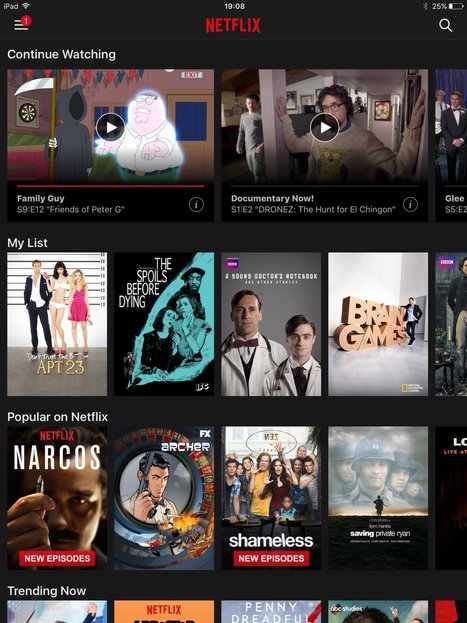

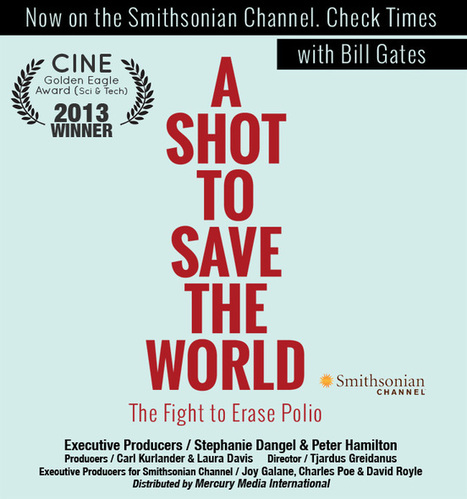
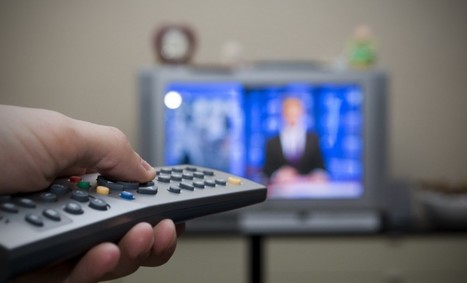

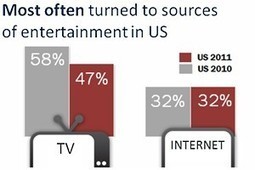



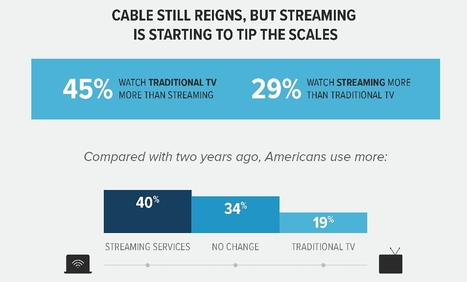



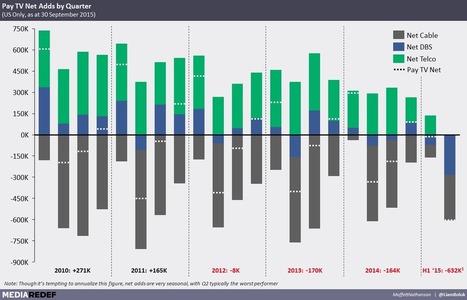



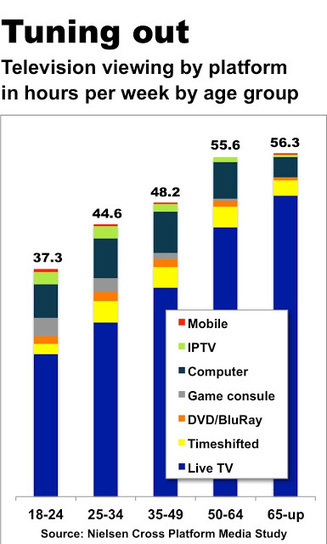
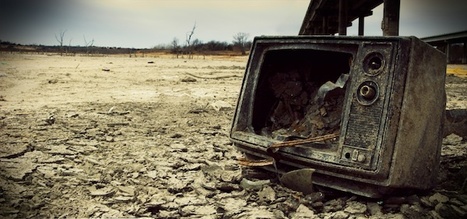





The arrival of Apple, Facebook and Google means that the hypercompetitive world of scripted TV is going to become even more ferocious.